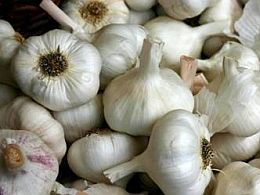Garlic and Heart Health – Benefits of garlic to cardiovascular health
 The tiny, mighty and yes, strong smelling herb garlic, Allium sativum is nature’s heart protector. This aromatic herb has been around since ancient Egyptian times and its uses span both culinary and medicinal practices. However, its benefits to cardiovascular health are unparalleled.
The tiny, mighty and yes, strong smelling herb garlic, Allium sativum is nature’s heart protector. This aromatic herb has been around since ancient Egyptian times and its uses span both culinary and medicinal practices. However, its benefits to cardiovascular health are unparalleled.
Many people have a love-hate relationship with garlic. There is nothing more enticing than the smell of garlic roasting in the oven, frying on a skillet, spread with butter and melted cheese on a thick slice of toasted focaccia. It adds fire to pasta sauces, a warmth to soups and unfortunately for those with sensitive tummies, it can add quite a fire to your stomach as well when eaten raw. Garlic tastes great going in – but is definitely not a herb you want to use on a first date as it can smell horrendous coming out!
Benefits of Garlic to Cardiovascular Health
Culinary uses aside, garlic has long been known for its medicinal purposes, particularly with its affinity for the cardiovascular system. Research has shown that garlic can reduce serum cholesterol and triglyceride levels (Zeng et al, 2012). As you may or may not know, increased levels of cholesterol and triglycerides in the blood can lead to plaque build-up on the inside of your vessel walls, which can lead to increased blood pressure as the plaques harden and narrow the passageway for blood to flow. In addition, if the plaque keeps growing unhindered, there can be extreme inflammation and irritation to the blood vessel wall, leading to a blood clot to form on the vessel wall as a protective measure. This blood clot can dislodge if the blood pressure gets high enough, floating down the blood stream and potentially causing an embolism in the lungs, heart or the brain. Garlic’s additional skills at reducing the aggregation of platelets would also benefit a situation in which a blood clot may form. By preventing the clot from forming in the first place, it can reduce the risk of a cardiovascular event.
Garlic has also been shown to regulate blood glucose levels. An imbalance in glucose and insulin levels in the blood leads to an increased risk of cardiovascular risk as well as type 2 Diabetes Mellitus. By regulating glucose levels in the bloodstream, both those risk factors are reduced, all with just the intake of more garlic.
Finally, garlic has been shown to help reduce blood pressure. An increase in blood pressure leads to an increased risk of heart attacks, strokes and embolisms. Consumption of garlic helps to reduce that risk (Ried K, Frank OR, Stocks NP. 2010).
Garlic is not only delicious, but it is heart healthy. To protect your heart, think of garlic and its benefits to your cardiovascular system.
References:
Ried, K.; Frank, O.R.; Stocks, N.P. (2010). “Aged garlic extract lowers blood pressure in patients with treated but uncontrolled hypertension: a randomised controlled trial”. Maturitas 67 (2): 144-150.
Zeng, T.; Guo, F.F.; Zhang, C.L.; Song, F.Y.; Zhao, X.L.; Xie, K.Q. (2012). “A meta-analysis of randomized, double-blind, placebo-controlled trials for the effects of garlic on serum lipid profiles”. J Sci Food Agric 92 (9): 1892-1902. Doi:10.1002/jsfa.5557
-
Advertisement

 Facebook
Facebook  Twitter
Twitter  RSS
RSS







